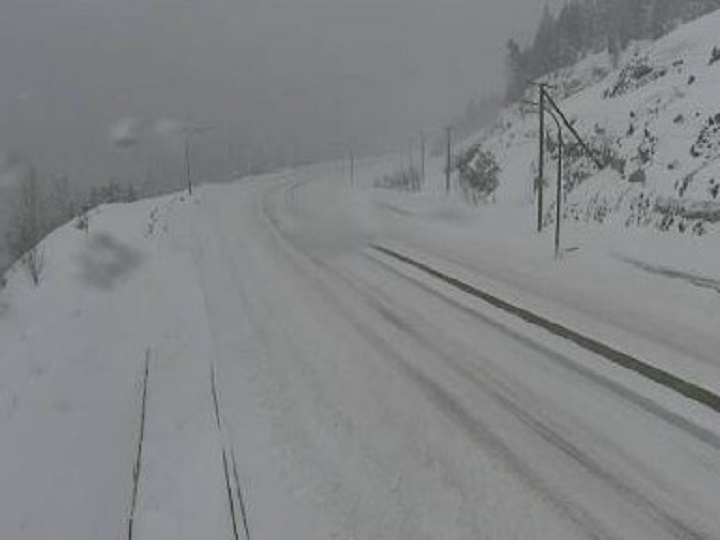Environment Canada has issued a snowfall warning for the Coquihalla Highway.

The national weather agency sent out the warning Friday morning, April 3, just before 7 a.m., stating snow had already fallen on the well-travelled route, and that more is expected.
The warning stretches from Hope to Merritt, where 20 to 25 centimetres is expected.
“A upper trough over the B.C. Interior will send a stream of moisture across the Coquihalla Highway from Hope to Merritt,” Environment Canada said in its warning.

Get breaking National news
“Overnight 5 to 10 cm of snow has fallen and a further 10 to 15 cm of snow is possible by early this evening.”
In related news, the provincial government sent out a reminder on Friday morning that winter tire regulations are in effect until month’s end in case of early spring snowfall.
The Ministry of Transportation says while highways and roads remain open during the coronavirus pandemic, the provincial health officer recommends that people stay close to home and avoid any non-essential travel.
_848x480_1508579907999.jpg?w=1040&quality=70&strip=all)
The ministry said those who travel B.C.’s highways should ensure that their vehicle is equipped with tires with the mountain/snowflake or mud and snow (M + S) symbol.
It added those tires must be in good conditions and have a minimum tread depth of 3.5 millimetres.
The ministry said last winter, the regulations were extended to April 30 from March 31 on select highways, most of which are located in the Interior and northern parts of the province.
The Sea to Sky Highway in the Lower Mainland and the Malahat on Vancouver Island are not included. Winter tire regulations were lifted on those routes on March 31.
Below are tips from the ministry regarding winter driving conditions.
- Check the weather forecast and adjust travel times to more favourable conditions, or choose alternative routes.
- For current road conditions, check DriveBC before leaving.
- Wear comfortable clothing that does not restrict movement while driving, but bring warm clothing (winter boots, coat, gloves and hat) in case getting out of the vehicle is required.
- Have an emergency plan.
- Ensure the vehicle has a full tank of gas and is equipped with a windshield scraper and snow brush, food and water, a first-aid kit and other emergency supplies.
- If stuck or stranded, do not panic. Stay with the vehicle for safety and warmth and if a cellphone is available, call for roadside assistance. If there is an emergency, call 911.
- Heavy snowfall or rapidly warming spring temperatures can increase the risk of avalanches in some areas. This can cause temporary highway closures while ministry avalanche experts ensure safe conditions.
For more about winter tire and chain routes, click here.
For the latest road conditions, visit DriveBC.








Comments